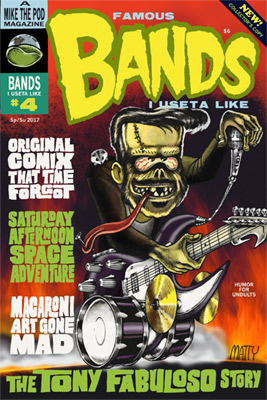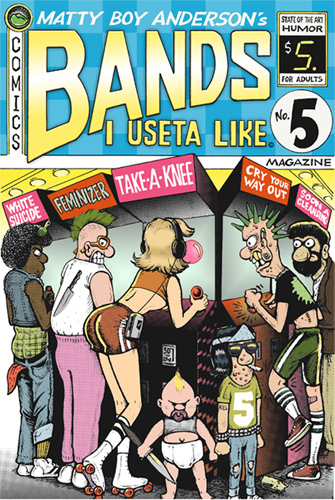DIY stands for “do-it-yourself”. You knew that, right? It was once a point of pride in music production. People love DIY, because it lights that little bulb in the mind that signals “I can do that”.
Ideally, you should feel that way about anything people do, aside from brain surgery or bomb disposal (and you can learn how to do those). Shoot, you could change your gender if you set your mind and wallet to it, but that’s a personal matter, and not something you want to capitalize upon. Still, there’s a lot to be said for taking a grass-roots shot at an admittedly lofty goal. For example, producing a homemade movie.
I myself have always dreamed of walking into a Toys ‘R Us, and seeing toys I’ve designed, on the shelves. (Selling like fervent pastries, of course.) Under current consumer conditions, it’s an uphill climb to launch an independent toy line, not just due to the expense, but the rigid safety precautions. Unlike myself, you probably haven’t dropped a Transformer on the floor in the past ten years. If you had, you’d see that they don’t break. Come apart and have to be popped back together, maybe. Break? No.

An historic cause of Transformer breakage: Gold Plastic Syndrome. If a Transformer has gold plastic, expect it to crumble. For this reason, they are seldom gold anymore. [image: TFWiki]
The toys I make tend to disintegrate when dropped, making them not exactly ideal for mass-market. Oh, you didn’t know I make toys? HA HA HA HA HA! HA HA HA HA well I don’t do it very often.

From the visual document of the Mekanzer Space Pirate Legion, officially noted as #385-#393 of Invisible Inc. series 4(2004), ©Matty Boy Anderson. These figurines average 2.5″ in height and are all hand-sculpted and one-of-a-kind. Each Mekanzer pirate features a wire mesh cape and weapon.
It’s time-consuming, you see. Plus, you can’t really “improvise” at the hard-copy stage, until your fingers are comfortable with a broad spectrum of sculpting technique. So I honed my skills by making hundreds of little buggers, mostly one-shots, small enough to fit inside a cigarette pack.

From a 2003 gallery show in Arlington, Virginia. If you look close, you’ll see a Tortureskull at top in front of the boxes, an entire tiny rock band on a stage, Tailothepup CDs, and at bottom, the smallest figures I’ve created, at under 1″ tall. Some have glow-in-the-dark accents.
Why that size? So that I could be part of the Artists In Cellophane group, a loose conglomeration of artists who produce work that can be dispensed out of retrofitted cigarette machines. Art-O-Mats, the brainchild of my friend, the wonderful Clark Whittington.
Alongside my gross animation work circa 2003, my contributions to Art-O-Mat were responsible for My First Real Boost. There was an Art-O-Mat machine in the Whitney Museum, which sold my work; ergo, my art sold in the Whitney Museum. I’ve gotten communication from all over the country from folks who bought my work, sometimes asking why it smells so terrible (I had a trial-and-error period with clear sealants), or why it’s stuck to the trading card inside the box (same deal). Rumor had it Martha Stewart bought one. The box I designed appeared in a French magazine, in a blurb about Art-O-Mat. WHOOSH!

From the first series (green box), Wakamolian Grandhorn and Bonk. Both appeared years later in John’s Arm: Armageddon. Two lucky people got them. ©Matty Boy Anderson
I’ve sent figurines to Jay Lynch and Jim Woodring, and I remember exactly which ones they were. If I can, I try to get the “right figure” to the “right person”. The rest is up to fate.
If you put $5 in an Art-O-Mat and pulled my knob (HOOAH), here’s what you’d (generally) get:
- A one-of-a-kind, fully non-poseable figurine
- A fancy, colorful box that doesn’t peel once I figured it out
- A mystery sticker or fragment
- A bio card describing the character that you and you alone possess

From the Mike The Pod website, depicting the first series. I used to draw the character for the bio card, until I started to go insane and used photos. Thus, many other figurines are visible in the background.
That was the hook. You got a totally unique character (until I flamed out, at around 600), part of a unique world, one that intermeshed with worlds I’d created previously. Other John’s Arm characters made cameos, largely for their ease of production; the titular limb made an appearance, but I’d mistakenly sculpted him a southpaw, necessitating the name “Parallel Universe John’s Arm”. Lefty was thrown into the mix, as was an equally-green Hyperbolean. These were time-saving measures, as I’d conceived Invisible Inc. as a near-literal universe. Exaggeration aside, I was naively intending to outdo all the space opera I’d seen before; Star Wars, Transformers, you name it. I was seriously trying to work out the logistics of a fist-fight between universes.
This was the first major world-building I attempted before Ceaseless Fables of Beyonding. If you think I have an attitude problem, it’s because I have built worlds, down to the last detail, and filled them with life. As sure as shit will stink, this gives you a real attitude. Why?
- You created characters, and problems for them to solve.
- You solved their problems.
After this, when you see people with problems, you’re like HOLY FUCK DUDE, DO YOU NOT REALIZE THAT I CREATED THE PLANET FARTMIST-16, AND I COULDN’T CARE LESS ABOUT YOUR WIFE’S ORGASMS?!?
Peruse any magazine interview of a good sci-fi writer, and you’ll see the subtle superiority of which I speak. They have the esprit de corps of six-foot metal bugs. This is what happens when you spend long nights pondering the end of man’s existence. I know this from experience.
Invisible Inc. went through 5 series, of varying length, until it split into shorter-run productions, like Totums, the last series thus far (2011). Early on, there was a special “Xmas” run, with a mass production spearheaded by none other than Dr. Kill-Everybody (sold separately).
Many of the wicked doctor’s inventions made their way into Invisible Inc. over the years. You can see the doctor, and his creations Psuto Moto and Fronkin Steen (also sold separately, to someone) in one of my more unfortunately-titled articles.
The 5th series was subtitled “Galactic G.U.T.S.”, as a direct pastiche of 1980s space-war toys.
For that run, each figure had a glass bead in its belly, revealing one of three symbols. This allowed collectors to play a sort of rock-paper-scissors with the figures, and for me to go almost totally batshit. I’d already cooked up three visually-distinct alien languages for Invisible Inc., and a Translatronic Conversion Matrix on the site so that people could decode them. Now I was also scripting comics to go along with everything else, and it won’t surprise you to learn that I had a complete nervous breakdown in 2005.
That’s the downside to playing God in fiction. You spend a lot of your time making imaginary people talk to each other. It’s part of the deal. But like brain surgery, you can get caught up in the loftier aspirations of it. Such a tiny part of the brain, from which all these universes spring. For lack of a better phrase, it can really go to your head.
Maybe that’s why there aren’t more independent toy franchises on the shelves of Toys ‘R Us.
That’s never stopped me before, however.

















You must be logged in to post a comment.